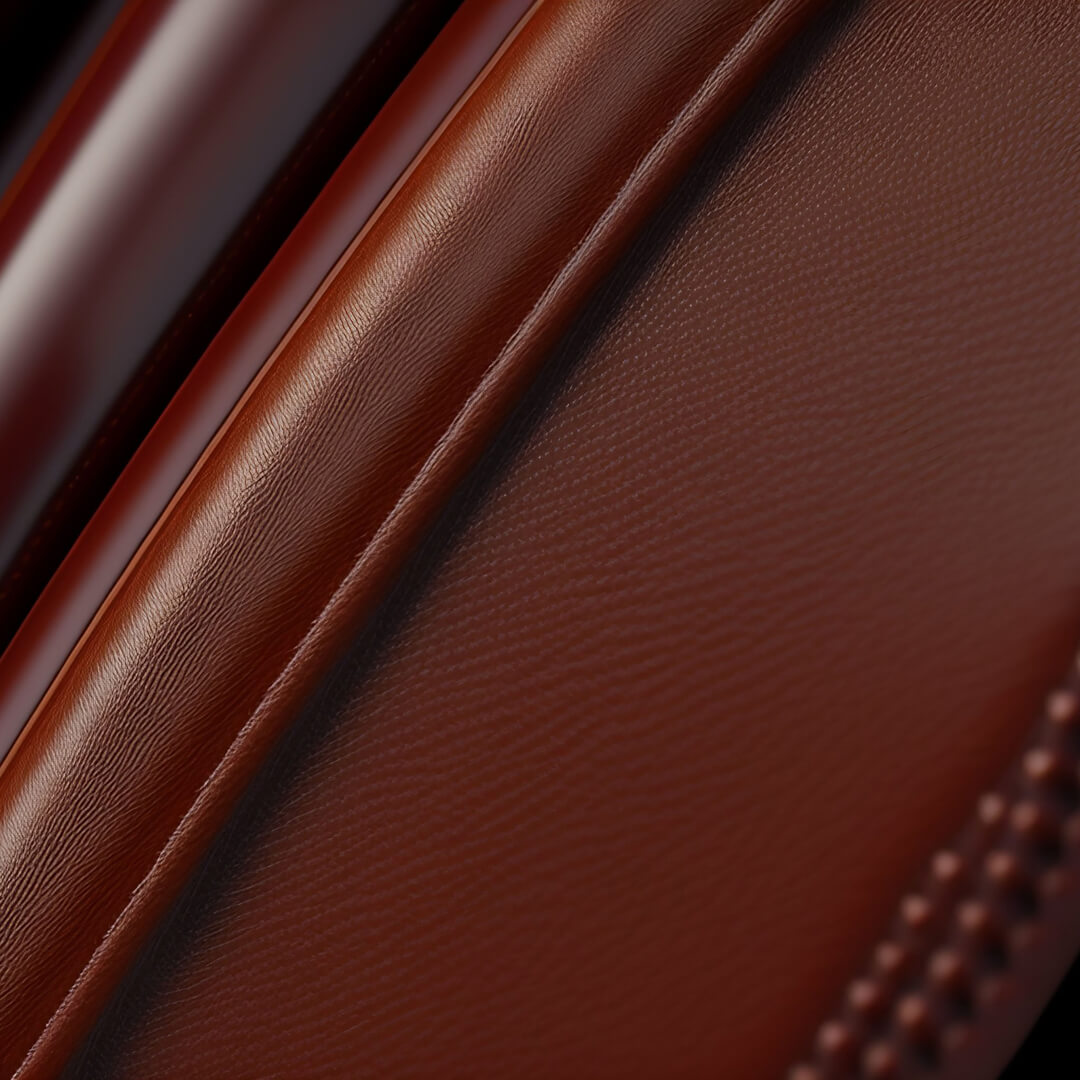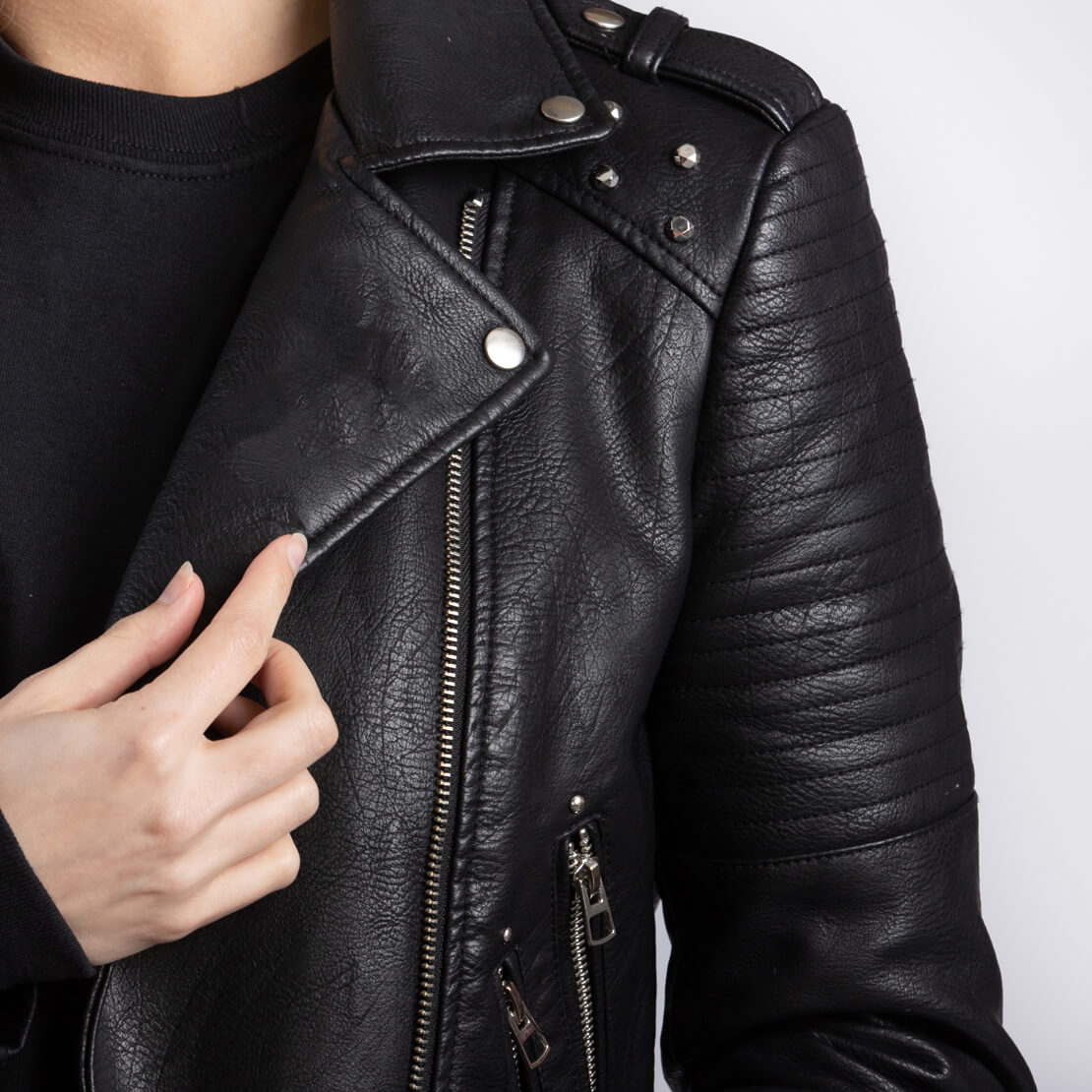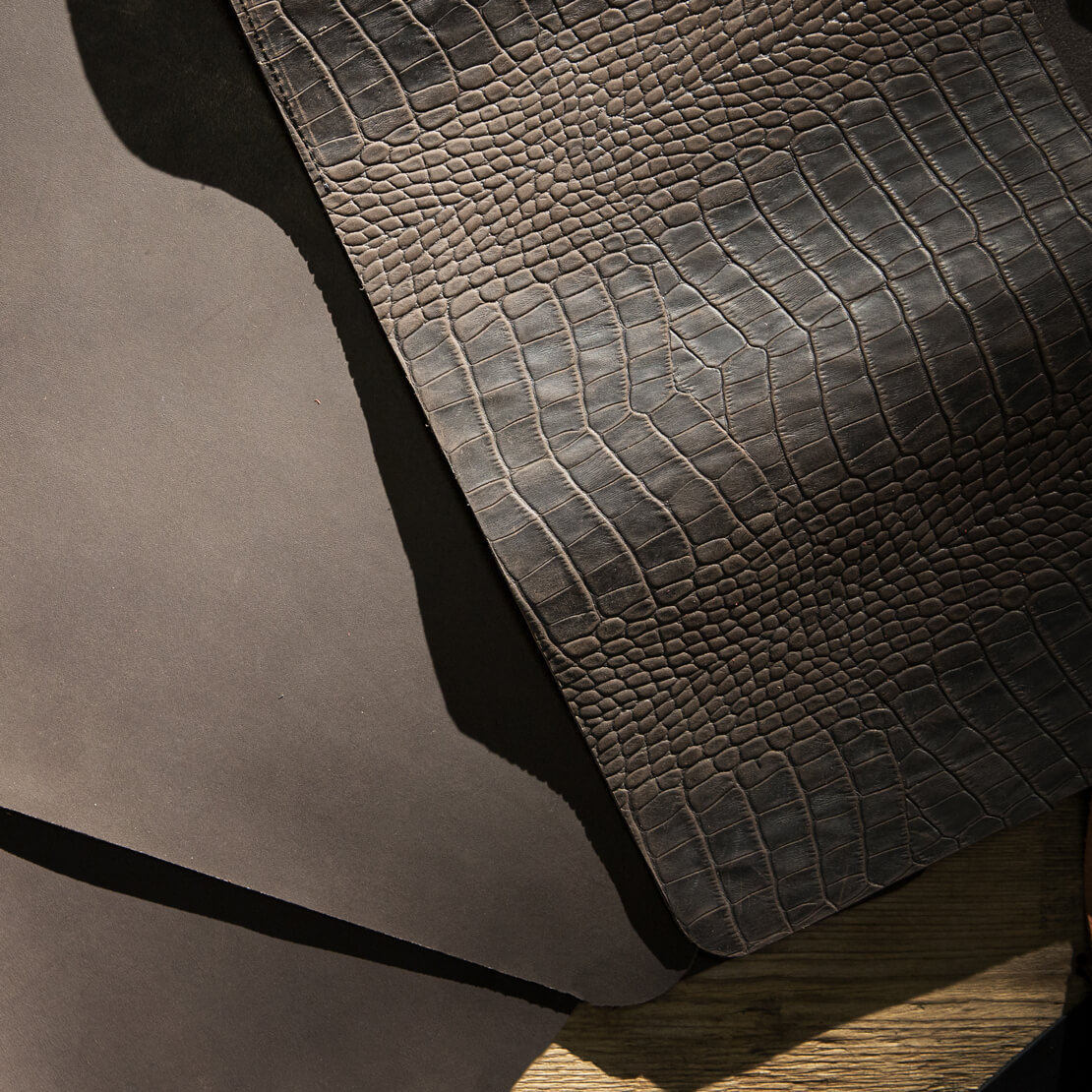Everything you need to know about synthetic leather

What is imitation leather?
Faux leather is one of the names given to "synthetic leather" or artificial leather. Faux leather or Skaï is also used to designate and distinguish this material from the real leather it is trying to imitate.
Faux leather is therefore one of the types of artificial leather.
Its composition is completely different. Synthetic leather is made from non-woven fibres, often polyamide, combined with a resin such as polyurethane. These are synthetic materials.
This combination creates a piece of textile whose c in plastic, in a layer of pvc. It is therefore created without any.

Don't confuse imitation leather with other leathers
Synthetic leather should not be confused with polyurethane leather or vegan leather. Polyurethane leather or PU leather is made from damaged hides combined with synthetic polymers.
Vegan leather, on the other hand, is made from plants such as pineapple.
The benefits of faux leather
Imitation leather is used in a wide range of applications, including shoes, jackets, handbags, cars and sofas. The main reason is that it is cheaper to manufacture than real leather.
Its visual appearance, which is close to that of real leather, makes it very popular with manufacturers.
It is versatile and can be used to create new colours, designs and shapes. That's why it's widely used to imitate leather in fashion.
What's more, skai is resistant to external aggression and the elements. This gives it an advantage over real leather.

The disadvantages of leatherette
The main disadvantage of leatherette is wear and tear. It wears out much more quickly than real leather. Unlike real leather, it is less likely to retain its beauty over time and to be renovated.
One of the disadvantages of leather in the fashion world is that it doesn't retain much heat. We'll leave you to decide whether that's a disadvantage or an advantage!
How can you tell imitation leather from leather?
From a simple visual point of view, it can be difficult to tell the difference between leather and imitation leather. There are, however, a few unbeatable techniques for distinguishing them.
The first and simplest technique is to tell them apart by feel. Real leather feels dry and warm when you touch it for a few minutes. Unlike synthetic leather, which can be damp.
You can also add a drop of water and check whether it is absorbed by the material. If the liquid penetrates the material, it is very likely to be real leather.
The second is the smell. Not so easy to test during your shopping trip, we admit. But we'll share it with you anyway! Quite simply, imitation leather smells like plastic, whereas real leather has a distinctive odour.
So now you know all you need to know to tell the difference between these two materials, which are so widespread in the fashion world!

How do I clean imitation leather?
Although imitation leather is different from leather, it still requires regular care. The top layer can show signs of wear from repeated use.
We recommend cleaning at least once a month. The care routines are similar to those for leather. It is therefore easy to clean.
It is advisable to keep imitation leather dry, as it is inherently soft and elastic. Getting it wet risks hardening and cracking if exposed to excessive moisture.
Always start by dusting with a boar bristle brush. Boar bristles are soft and supple. They won't scratch the Skai and get into every nook and cranny for a thorough dusting. Then continue with a gentle, solvent-free cleaner.
If you need to bring out the colour, you can use covering products such as shoe polish creams or renovation milks for other surfaces. Always finish with a protector, whether a polish paste, spray or gel.
Need advice on how to care for your leatherette?
For a precise diagnosis of your leatherette surface, don't hesitate to contact us! Our team is always on hand to help you find the best care routine.
Contact us